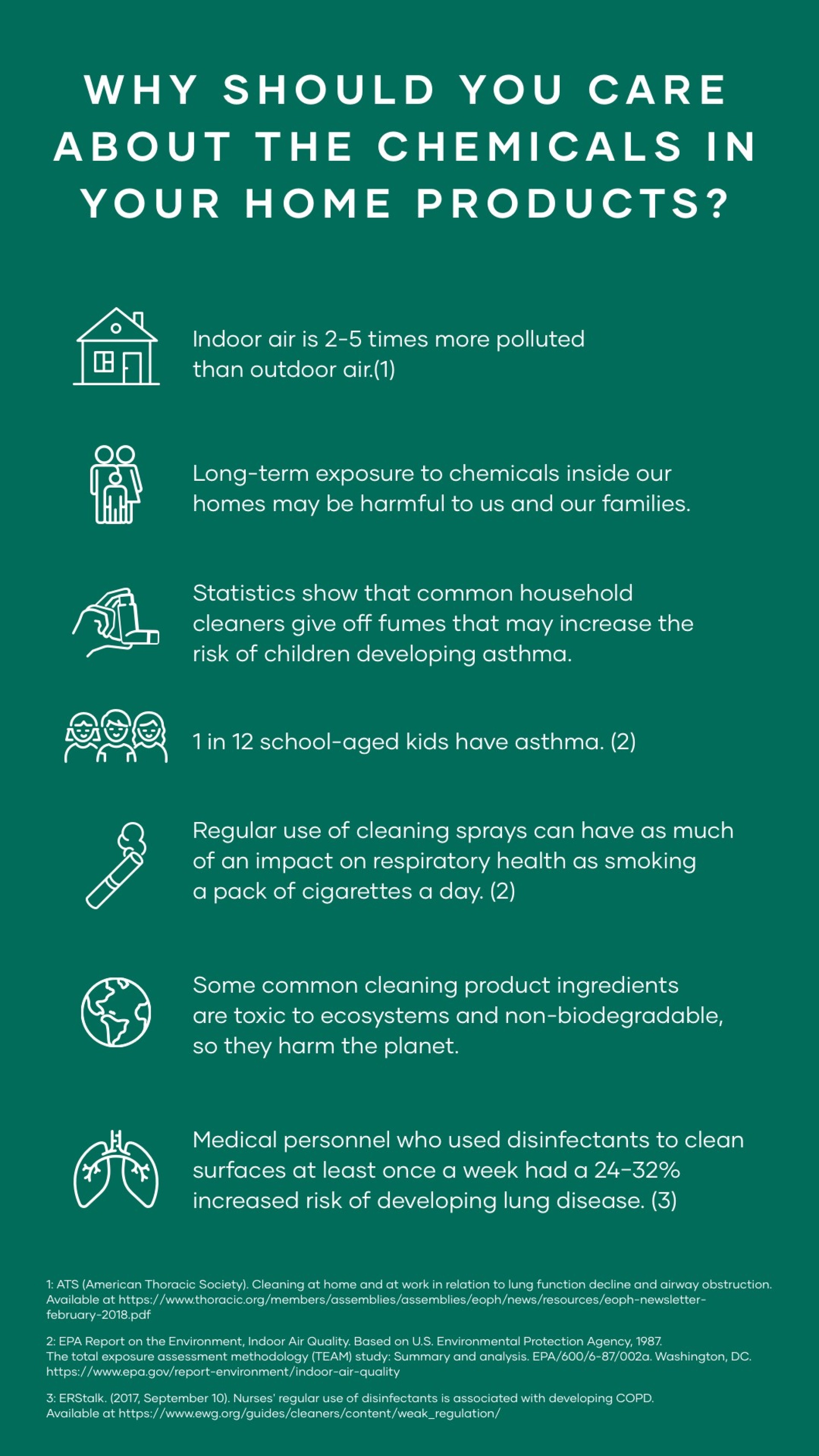A Fresh Start for Spring: Greener Cleaning for Healthier Homes and a Healthier Planet

As April arrives and spring begins to bloom around us, many take this seasonal shift as an opportunity to reset—clearing out clutter, reorganizing routines, and breathing new life into their homes. With Earth Week just around the corner, it's also a powerful time to reflect on how our everyday choices impact not only the environment, but our personal health as well.
One often-overlooked area during spring refreshes? The cleaning products we use.
What’s Lurking Under the Sink?
It’s easy to trust that the products on our store shelves are safe, but the truth is, many household cleaners contain ingredients that can harm both people and the planet. In fact, regular use of certain household sprays has been linked to lung damage equivalent to smoking a pack of cigarettes a day (1). And that’s just the beginning.

Here are more reasons to take a closer look at your cleaning cabinet:
- Many common ingredients are linked to health concerns. Research has connected certain chemicals to cancer, reproductive issues, and respiratory problems (2).
- Indoor air is often more polluted than outdoor air. Due in part to products used in the home, indoor air can be 2 to 5 times more polluted than the air outside (3).
- Regulation is limited. Cleaning products aren’t regulated by the FDA, and manufacturers are not required to disclose all ingredients on their labels.
- Many chemicals have never been tested for safety. Thousands were grandfathered in under the 1976 Toxic Substances Control Act without adequate testing.
- Children may be especially vulnerable. Fumes from cleaning products may increase a child’s risk of developing asthma—a condition that already affects 1 in 12 school-aged children (4).
- Poison Control centers receive frequent calls related to cleaners. In fact, household cleaning products are consistently among the top five causes of calls.
- Prenatal exposure to certain cleaning chemicals can impact a baby’s development. Studies link this exposure to effects on birth weight, IQ, and long-term lung function (5).
- Environmental impact matters too. Many conventional cleaning products are made with non-renewable resources, are not biodegradable, and can harm ecosystems when they enter waterways or soil.
- Even health professionals are at risk. Nurses and other healthcare workers who regularly use disinfectants have a 24–32% increased risk of developing chronic lung conditions (6).
Why It Matters for Families—and Communities
These facts might feel alarming, but they are also empowering. Once we’re aware of the risks, we have the opportunity to make better choices. A healthier home contributes to the well-being of everyone inside—and cleaner practices can positively impact our local environment as well.
This April, consider aligning your spring cleaning with Earth Week values. Whether it’s choosing fragrance-free, plant-based alternatives or making simple DIY cleaning solutions at home, every small change adds up. These shifts don’t need to be complicated or expensive to be effective—they just need to be intentional.
Start Small, Think Big
If anything here surprised you, you’re not alone. Many people are unaware of just how unregulated and potentially harmful some household products can be. But the good news is that with even a few thoughtful swaps, you can significantly reduce the chemical load in your home and contribute to a healthier future.
Let this spring be the season you choose clean—truly clean—for yourself, your family, and your community.
What stood out most to you? What changes are you thinking about making? Conversations like these help build awareness and inspire meaningful action.
1: ATS (American Thoracic Society). Cleaning at home and at work in relation to lung function decline and airway obstruction. Available at https://www.thoracic.org/members/assemblies/assemblies/eoph/news/resources/eophnewsletter-february-2018.pdf
2: Environmental Working Group, EWG’s Healthy Living: Home Guide. Available at https://www.ewg.org/newsinsights/news-release/breathe-safer-indoor-air-ewgs-healthy-living-home-guide
3: EPA Report on the Environment, Indoor Air Quality. Based on U.S. Environmental Protection Agency, 1987. The total exposure assessment methodology (TEAM) study: Summary and analysis. EPA/600/6-87/002a. Washington, DC. https://www.epa.gov/report-environment/indoor-air-quality
4: EPA Report on the Environment, Indoor Air Quality. Based on U.S. Environmental Protection Agency, 1987. The total exposure assessment methodology (TEAM) study: Summary and analysis. EPA/600/6-87/002a. Washington, DC. https://www.epa.gov/report-environment/indoor-air-quality
5: Environmental Working Group, Cleaning Supplies and Your Health. Available at https://www.ewg.org/healthyhomeguide/cleaners-and-air-fresheners/
6: ERStalk. (2017, September 10). Nurses' regular use of disinfectants is associated with developing COPD. Available at https://www.ewg.org/guides/cleaners/content/weak_regulation/

Bob Ferguson
(913) 208−6357
bob@fergleads.com

